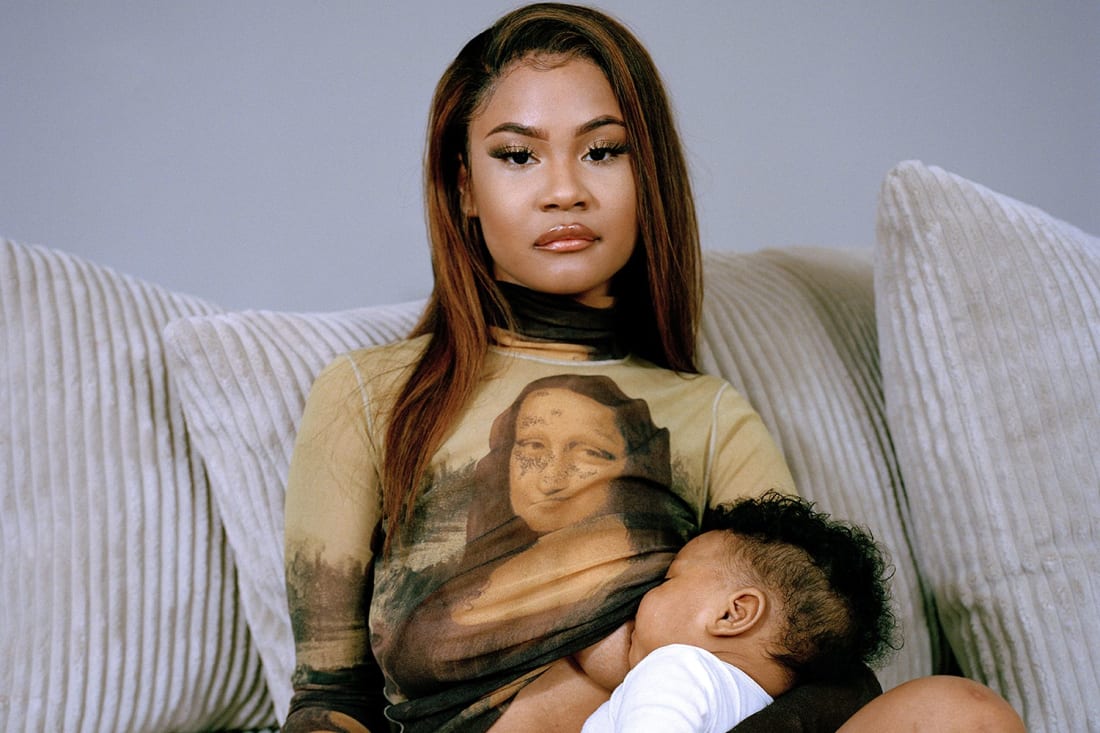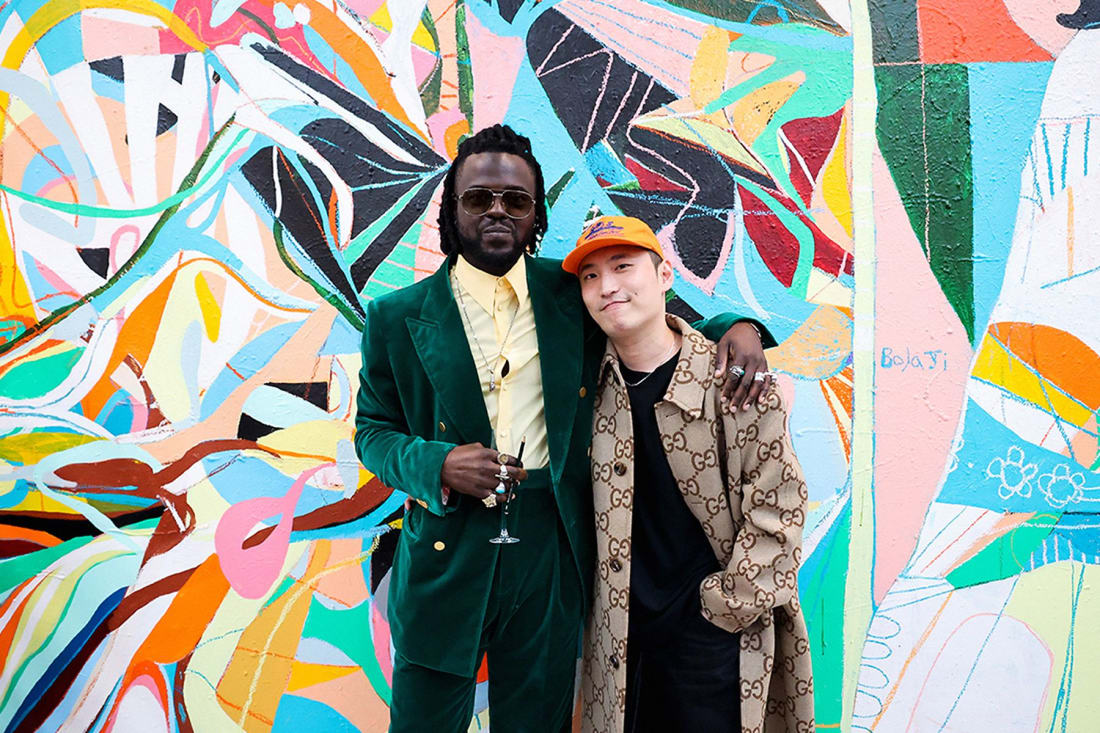Carlos Idun-Tawiah’s striking photographs restore the Ghanaian utopia of his childhood
In his award-winning series ‘Sunday Special’, the Accra-based artist creates an ode to the rituals, places and people in his life
In his award-winning series ‘Sunday Special’, the Accra-based artist creates an ode to the rituals, places and people in his life
Welcome to Stop Scrolling, where each fortnight arts and culture writer Gilda Bruno will be bringing you a roundup of carefully curated exhibitions, art fairs and photo books to check out, as well as exclusive conversations with some of today's most exciting emerging artists.
This week, Bruno speaks with Ghanaian photographer Carlos Idun-Tawiah about his visual story Sunday Special: a love letter to Accra’s vibrant, timeless culture as seen in a collection of photographs depicting family, faith and youth at play.
“I photographed this series as a requiem of my memories, as a document in time,” Carlos Idun-Tawiah tells woo over a creaky phone call speaking of his recent series, Sunday Special. The winner of a number of prestigious accolades – such as the OpenWalls Arles 2022 Award and the Contemporary African Photography Prize 2023 – this new body of work belongs to an ongoing, seven-part photographic collection charting Ghanaian life and culture. “Sunday Special was born as I began to dive deeper into my family’s photography archive,” the Accra-based photographer explains. “The images contained in it focus on the Black experience by visualising the many rituals, traditions and stories associated with it.”
Taking the rich, many-sided cultural heritage of Ghana as his canvas, Idun-Tawiah weaves the narratives that filled his West African childhood into staged images that appear suspended between the past and the present. Having first approached photography in his teenage years, today the emerging talent is carving himself a place within the contemporary art scene by centring African and Black communities in his work. Standing out for their pastel-shaded palette as well as for the joyful, warm atmospheres lensed within them, his photographs strive to do justice to the evolution of the African experience by focusing on the idiosyncrasies shaping the realities of both the continent and the diaspora.
While Idun-Tawiah’s striking images are deliberately inspired by the great masters of Black photography, including Gordon Parks, Samuel Fosso, Malick Sidibé, James Barnor, and Carrie Mae Weems, his contribution to the visual arts landscape finds its roots in themes that have never been more topical. Situated at the intersections of fashion, archival and documentary photography, his eye-catching, colourful style “seeks to revitalise and correct misinterpretations, disfigurations and gaps in long-lasting perceptions about African people”, the artist explains. Turning to photography to forward an insider representation of Blackness, in Sunday Special, Idun-Tawiah redirects people’s attention onto the moments of connection, leisure and play setting the pace for a typical Ghanaian weekend.
We speak to him about the origins of the optimism permeating his visual practice, the influence that family albums have had on the development of his signature style, and why capturing “the positive” could serve as a window into a brighter future.
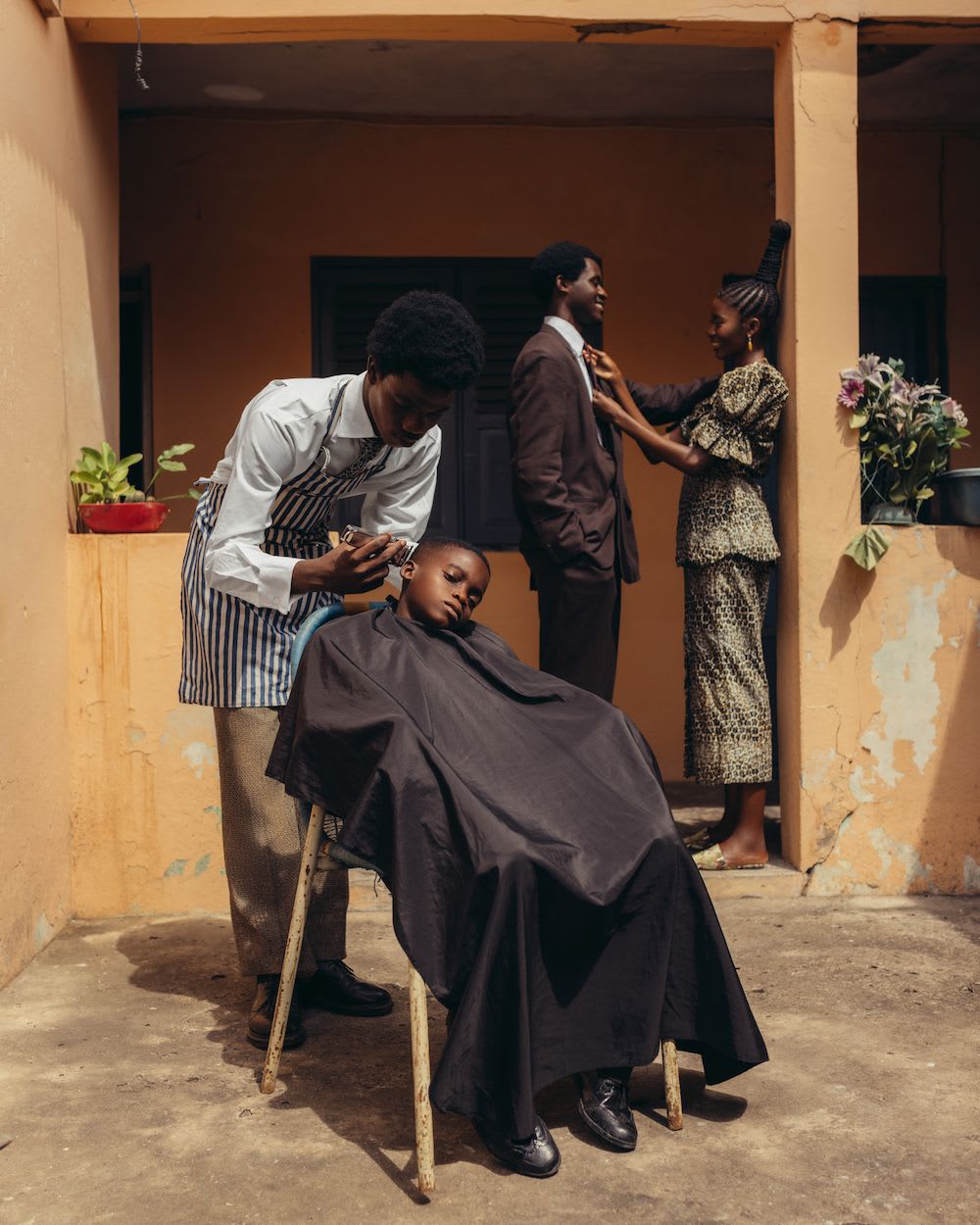

How did photography come into your life?
Carlos Idun-Tawiah: Growing up in Ghana, I would be constantly surrounded by photographers, whether at birthday parties and family gatherings or even just at church. Still, it was only at 16 that I began to open up to the possibility of trying my hand at it. My dad, who at the time lived in London, used to bring down a lot of disposable cameras and Polaroids on his visits to Ghana. Taking portraits of me was his way of charting my growth from a distance; he would capture the few moments we got to spend together and take them back to London on his departure. He wasn’t the only one in my family obsessed with archiving moments. My mum would always be after ways of filling the family albums. Every picture we would take during my childhood would end up in one of them.
While both my parents certainly contributed to sparking my love of photography, it was while completing a design class that I first became familiar with Adobe Photoshop and Lightroom and actually began to create images. For a long time, I would just use one of my friends’ DSLR camera. Eventually, I managed to get one of my own. It was a gift from my dad, actually. The last one he bought me before passing away. I remember the moment I unwrapped it as if it was yesterday; he had already died when I received it. Ever since that, I have tried to use photography as a form of memorial; not just for him, but especially for myself, as all he had ever wanted for me was to know that I was pursuing my dreams.
What were your early photographic experiments like? What does photography mean to you now?
Carlos Idun-Tawiah: I started out taking pictures of my friends. Many of the people in my inner circle were aspiring models, so we would often develop concepts and ideas for creative shoots. As things progressed, I began to feel the need to lens stories that meant something deeper to me. Photography is my personal contribution to the canon of images across the world. It is me playing my part into something that didn’t begin nor will end with me. To me, shooting images feels like weighing in on a global conversation. I feel grateful to have the opportunity to create photographs that will be used as symbols of Black life in the future.
Your award-winning series ‘Sunday Special’ owes its stuck-in-time feel to your family’s photo archives. Looking back at the early work of pioneering African image-makers, we could almost say that the African photography scene was born thanks to the family album. What influence does this object hold on your craft?
Carlos Idun-Tawiah: What keeps African people together is our celebration of the present: compared to other countries, we really cherish moments and protect them from fading like no one else. It is something we have done since cameras first began to appear in the continent, despite not having as many artistic references to look up to as people in the West. Still, the ones we had, from Samuel Fosso and Malick Sidibé to James Barnor, were enough to revolutionise the history of photography. Their work took shape from their preoccupation with the preservation of our culture, much like family albums. Thanks to them, we got to know who we are and what our roots are all about. For me, photographing means filling in the gaps that I found in those same albums, presenting alternative manifestations of that same reality.
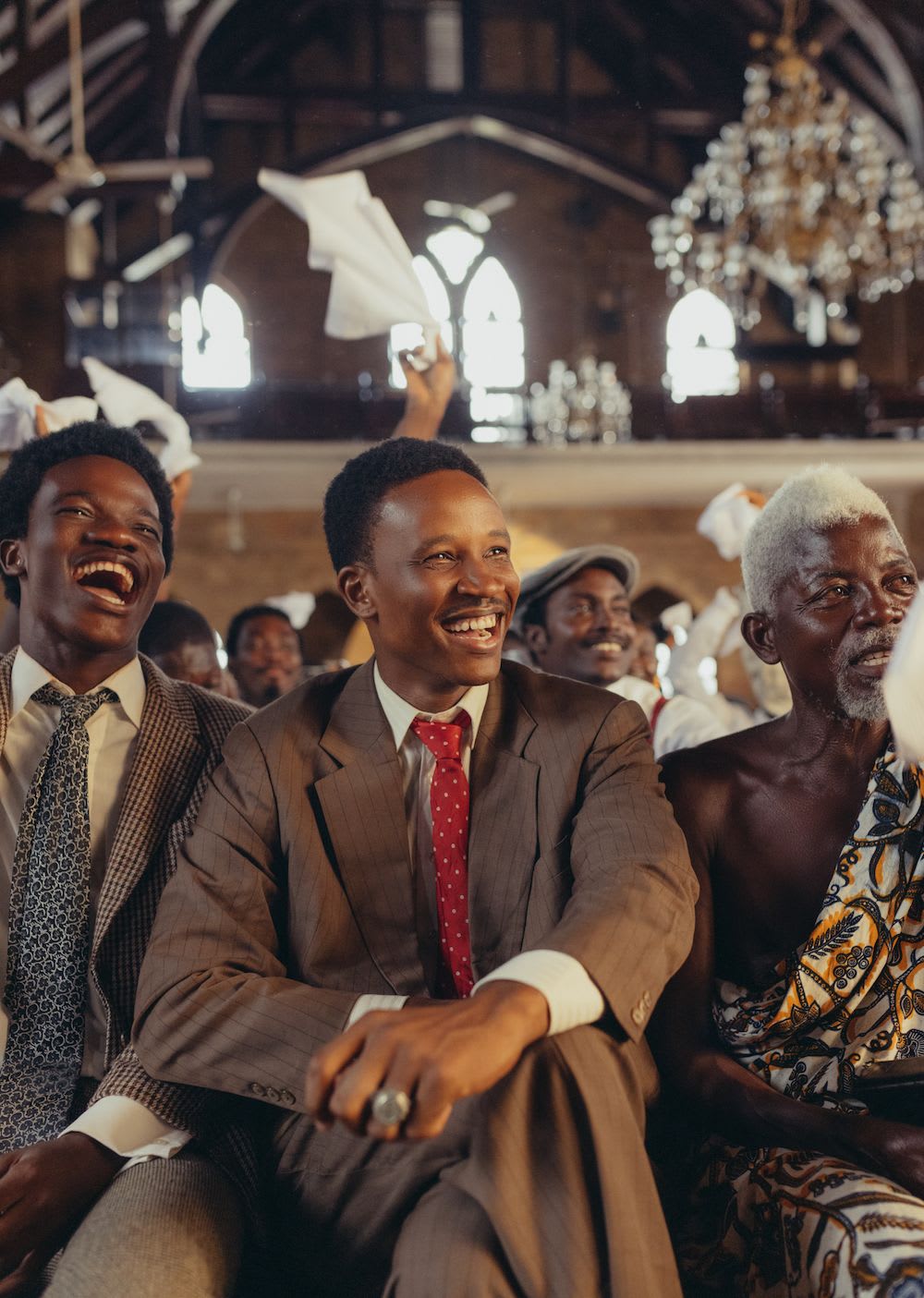


Most of your photographs are staged. How do you go about curating the scenes you then capture? Do you start knowing what the end result should look like, or are you open to improvisation?
Carlos Idun-Tawiah: Quite interestingly, many of the images I have shot so far resemble some of the photographs contained in my family’s archives without it being intentional. Others are voluntarily shaped after them or curated to contain references to other Black photographers. While putting this story together, I was especially inspired by the work of groundbreaking image-makers Gordon Parks and Carrie Mae Weems; two visual artists who knew how to immerse viewers into other people’s lives. Rather than focusing on the glamorous and the superficial as many photographers did at the time, they devoted themselves to lensing the mundane, the overlooked, also depicting the reality of impoverished families. Through their photography, they proved that there can be beauty even in challenging circumstances and went on to document it like no one else had done before.
‘Sunday Special’ promotes an insider look at Ghanaian life. Why is this important to you?
Carlos Idun-Tawiah: Images shape the way we perceive the world. As a photographer, I firmly believe in my duty not just to beautifully depict what life is like in Ghana, but also to narrate it in an accurate, truthful way. As my artist statement reads, I like to tell stories with as much clarity as grace. Whenever I come across photos of African people in precarious life conditions, all I wonder is why can’t we, for once, strive to focus on the positive, on the joyful and the youthful parts of our story? Why isn’t zooming in on hope the norm? My work revolves around community, friendship and love. That is where beauty lies, in our quest for shared meaning and belonging.
Ghana is beautiful and multifaceted as no other place in the world. Who else, if not us, can immortalise the vibrancy of our place and people? It should be African photographers’ job to narrate the African diaspora because we are the ones who have experienced it. Simple vignettes of life like two little girls jumping and clapping their hands mid-air, young boys playing football on a dusty pitch, or families coming together on a Sunday morning, truly speak to Ghanaian life and our incorruptible sense of togetherness. It is up to us African people to capture the possibility of a positive outcome and make it tangible and “real” through our work.
How would you like the public to engage with this body of work?
Carlos Idun-Tawiah: What I love about Sunday Special is that it is, at once, very personal and universal. Everyone can resonate with it because we all belong somewhere. This story is an expression of what home means to me. It also carries a deep, unescapable feeling of nostalgia, the kind of nostalgia you are bound to experience at least once in your life. It takes viewers on a journey through time, encouraging them to look at and reappropriate their fading memories. Having grown up at a time when technology was starting to shape people’s lives, Sunday Special felt like an opportunity for me to envision a world where we can only interact with each other by gathering and experiencing life as one – whether at the playground, by the sea, or at the church. Ultimately, this series is a testament to my religious faith, an invitation for others to find something worth believing in.
Carlos Idun-Tawiah’s ‘Sunday Special’ series is on display at Galerie Huit Arles, Arles, through 23 September
Scroll for an extra dose of art and culture news, curated for you by woo
When there's so much to see and experience, it can be hard to choose where to spend your valuable time. Below, Bruno picks a selection of standout shows and culture events to explore in the coming weeks.
REGENERATE: Noorderlicht International Photo Festival, Museum Belvédère, Heerenveen, the Netherlands, NL

Inaugurated on 24 June and open through 14 September, REGENERATE: Noorderlicht International Photo Festival examines humans’ connection to and interaction with the Earth and its ecosystems by presenting works inspired by the desire to “restore and enhance the health and resilience of nature”. Hosted at Museum Belvédère, Heerenveen, with photographs by Vincent van Galeen, Suzette Bousema, Sayam Ghosh, Rebecca Najdowski, Ole Witt, João Castilho, Dirk-Jan Visser and Gus Drake, Consuelo Oppizzi, Alex Kemman, Angela Blažanović, BetweenTwoHands, and Misha Vallejo Prut, a special exhibition part of this year’s festival programme sparks reflection on the impact of invasive industrial practices, the fragility of the natural landscape and its ability to recover from human-inflicted environmental disasters through the eyes of artists hailing from across the world.
Marcus Nelson and Tim Plamper, A Tragedy in Three Acts, two-person show, GROVE, Berlin, DE
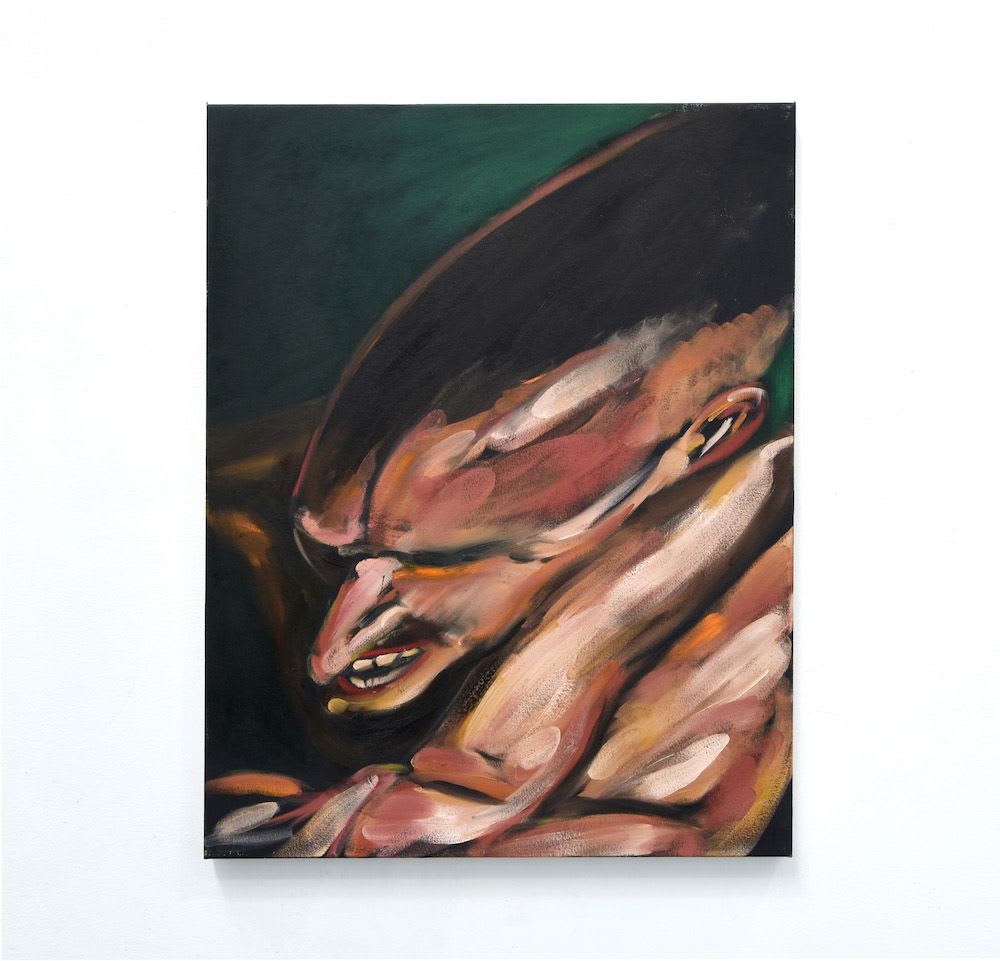
Launched at GROVE, Berlin, on 8 July, A Tragedy in Three Acts is a duo exhibition presenting new works by Marcus Nelson and Tim Plamper. Stemming from the artists’ creative reworking of the existential dilemmas that haunt our everyday experiences, the showcase sees the two engage with the challenges of 21st-century being across their mediums of choice. If Nelson ponders the continuum between the human and the bestial in canvases inhabited by flayed, deformed bodies and rabid animals; Plaper’s offering leverages film and performance to unleash a powerful critique of capitalist culture.
Imbued with paranoia, A Tragedy in Three Acts raises awareness of the unbearable rhythms and dynamics that the post-modern world has forced upon us. Spotlighting artworks built off the tension at the core of contemporary life, the exhibition sees Nelson and Plamper approach art as a form of catharsis to reclaim control over their experiences.
The Horses, new photo book by Gareth McConnell

Gareth McConnell’s kaleidoscopic new monograph, The Horses, explores the mysterious world and beauty of horses. Published under the artist’s Sorika imprint and out July 13, the book garners a saturated collection of photographs charged with meaning and enigma. Developed by the artist on a trip to Iceland back in 2022, the volume looks at the profound symbolisms embodied by the horse as one of the key elements of the Icelandic pristine natural paradise.
Throughout the book, McConnell’s horses are portrayed in all of their glory. Here, their silky mane and coat are brought centre stage in a spellbinding game of colourful, flashing lights. Besides being aesthetically amusing, the images inhabiting the pages of McConnell’s latest monograph capture Iceland as a remote, safe place immersed in mysticism. As conflicts and crises continue to shape the public discourse across the globe, these dreamlike, saturated portraits of horses celebrate the primordial power of nature, “offering solace in unnerving times”.
Women Defining Women in Contemporary Art of the Middle East and Beyond, group show, Los Angeles County Museum of Art, Los Angeles, US

Featuring 75 works by women artists born or living in Islamic societies, Women Defining Women in Contemporary Art of the Middle East and Beyond sees the participating creatives reappropriate the narrative surrounding their lived experiences. Often depicted as powerless and invisible, here, the spotlighted female creatives participate in countering long-lasting stereotypes and misconceptions related to Islamic women by portraying the many nuances that make up their reality.
Spanning photography, painting, illustration, and more, the group showcase explores what it means to be a woman of muslim descent by touching on themes such as the body, sexuality, self-image and faith through the unique perspective of artists hailing from Africa to West and Central Asia. Open at the Los Angeles County Museum of Art through 24 September, the exhibition brings together artworks by Hayv Kahraman, Laila Shawa and Huda Lufti alongside contributions by other emerging and established personalities.
New Ancients, group show, Guts Gallery, London, UK

Curated by Ellie Pennick and Sayori Radda for Guts Gallery, New Ancients (through August 4) is a group show gathering the work of artists intent on understanding how myths contribute to shaping the way we interact with the world and others. Featuring a trailblazing, intergenerational selection of talents – including Marina Abramović, Jade Blackstock, Maggie Dunlap, Frederik Exer, Tomas Harker, Laila Tara H, Sara Knowland, Shailee Mehta, Pia Ortuño, Anousha Payne, Tai Shani, Rosie Grace Ward – the exhibition celebrates the centuries-spanning, elaborate art of storytelling as crucial to human survival.
In a world on the cusp of ecological disaster, where an ever-polarised international community struggles to endure the frenetic routine promoted by capitalism, New Ancients serves as a reminder of “what it means to be human”. Here, the participating artists reflect on mythologies from the past across painting, photography, sculpture, and video to demonstrate how “many of the drives, desires and existential concerns of the characters in those stories are still as relevant today”.

